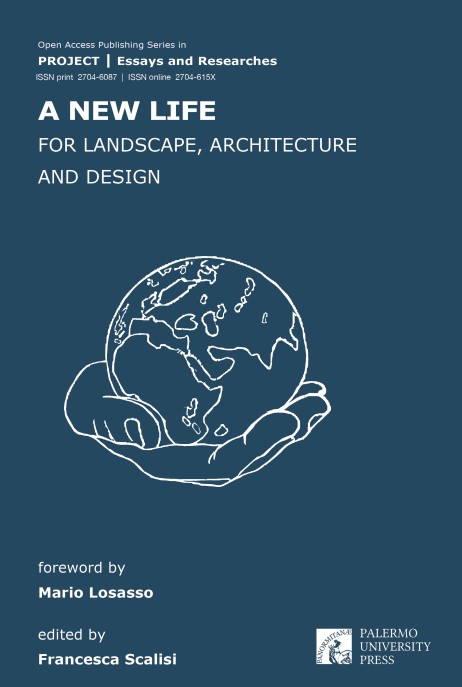
Title
Environmental certifications in buildings. How sustainable are green buildings?
DOI
doi.org/ 10.19229/978-88-5509-291-3/662021
Keywords
green buildings, LEED, environmental sustainability, ecoefficiency, sustainable development
Abstract
Over the last decade, urban growth in Peru has been high, leading to a renewal of the face of cities. This process is complex due to two issues, the expansion of cities and the renovation of old blocks. The first case verifies the presence in the city of different buildings with sophisticated technological applications (smart building) and the second case the control of energy and water consumption (green building). The research described the use of the database of registered projects and buildings underlying the GBC (2013-2018), using statistical analysis tools that determined patterns and trends, in terms of credits completed or met according to LEED categories. Finally, it analyzed energy, water, and other criteria that influence sustainability through MCA (multi-criteria analysis) using a double MAS type input. Green buildings contribute to environmental sustainability through site selection, use of tools to reduce energy consumption, and features that promote low emissions. They contribute less in terms of social sustainability, compared to other certifications such as BREEAM. Core and shell, New construction or Existing building are registered under the ‘low carbon’ and ‘carbon neutral’ initiatives, mostly satisfying the aspects addressed in the ‘energy & atmosphere’ criterion. However, they have a low match in eco-efficiency issues, especially with respect to water.
Section
Architecture | Research & Experimentation
pp. 96-109
Author(s)
Milagros Defilippi, Alexis Dueñas
Author(s) Biography
Milagros Defilippi is a Full Professor at the Department of Architecture, Universidad Nacional Federico Villarreal (Peru), in charge of subjects related to technology and environment, geometry and design workshop, with a Master in Environmental Management and a Doctorate in Sustainable Development; her research focuses on public spaces, sustainability, the environment and the quality of life of the population. E-mail: tdefilippi@unfv.edu.pe
Alexis Dueñas is a Professor at Universidad Nacional La Molina and Pontificia Universidad Católica del Peru, with a Master’s Degree in Environmental Management and a Doctorate in Sustainable Development; his research focuses on statistical analysis and probabilities. E-mail: fduenas@lamolina.edu.pe
References
Allenby, B. (2012), The theory and practice of sustainable engineering, Prentice Hall, Upper Saddle River.
Blanco, J. (2016), “Hacia el diseño y gestión de barrios sustentables en Chile”, in Revista INVI, vol. 31, issue 86, pp. 203-2014. [Online] Available at: dx.doi.org/10.4067/S0718-83582016000100008 [Accessed 27 March 2021].
Castillo Haeger, C. and del Castillo Oyarrzún, C. (2015), “Enseñanza, Sustentabilidad, Arquitectura | Education, Sustainability, Architecture”, in Arquitecturas del sur, vol. 33, pp. 31-43. [Online] Available at issuu.com/arquitecturasdelsur/docs/as48 [Accessed 27 March 2021].
Cornejo Cárdenas, C. (2017), “Bases para una evaluación de la arquietctura sostenible”, in Boletín del Centro de Investigación de la Creatividad, vol. 2, pp. 22-44. [Online] Available at: issuu.com/universidaducal/docs/2da_edici__n_bolet__n_cic_2017/22 [Accessed 20 April 2021].
de Oliveira Menezes, V. and Kindl da Cunha, S. (2016), “Ecoinovação em Redes Hoteleiras Globais – Designs, Barreiras, Estímulos e Motivações”, in Brazilian Bussiness Review, vol. 13, n. 5, pp. 111-132. [Online] Available at academia.edu/29107903/Ecoinova%C3%A7%C3%A3o_em_Redes_Hoteleiras_Globais_Designs_Barreiras_Est%C3%ADmulos_e_Motiva%C3%A7%C3%B5es [Accessed 20 April 2021].
Dias-Angeloa, F., Jabbourb, C. J. and Calderaroc, J. (2014), “Greening the work force in Brazilian hotels – The role of environmental training”, in Work, vol. 49, n. 3, pp. 347-356. [Online] Available at doi.org/10.3233/WOR-141873 [Accessed 22 April 2021].
García-Torres, S., Kahhat, R. and Santa-Cruz, S. (2017), “Methodology to characterize and quantify debris generation in residential buildings after seismic events”, in Resources, Conservation and Recycling, vol. 117, part B, pp. 151-159. [Online] Available at doi.org/10.1016/j.resconrec.2016.11.006 [Accessed 22 April 2021].
GBC (2018), Projects. [Online] Available at: usgbc.org/projects/ [Accessed 22 June 2021].
Huedo, P. and López-Mesa, B. (2013), “Revisión de herramientas de asistencia en la selección de soluciones constructivas sostenibles de edificación”, in Informes de la Construcción, vol. 65, n. 529, pp. 77-88. [Online] Available at: doi.org/10.3989/ic.11.048 [Accessed 22 June 2021].
Lützkendorf, T. (2010), “Sustainable properties – dream or trends?, in Informes de la Construcción, vol. 62, n. 517, pp. 5-22. [Online] Available at: doi.org/10.3989/ic.08.055[Accessed 15 June 2020].
Macias, M. and García-Navarro, J. (2010), “Metodología y herramienta VERDE para la evaluación de la sostenibilidad en edificios”, in Informes de la construcción, vol. 62, n. 517, pp. 87-100. [Online] Available at: doi.org/10.3989/ic.08.056 [Accessed 12 June 2021].
Martin, D.,Tomida, M.and Meacham, B.(2016),“Environmental impact of fire”, in Fire Science Reviews, vol. 5 paper 5. [Online] Available at: doi.org/10.1186/s40038-016-0014-1 [Accessed 12 April 2021].
Mkrtchyan, T. and Lokhova, E. (2017), “Ecological effectiveness as an essential quality requirement of innovational construction”, in MATEC Web Conference – International Science Conference SPbWOSCE-2016 – SMART City, vol. 106, pp. 1-7. [Online] Available at doi.org/10.1051/matecconf/201710607022 [Accessed 20 April 2021].
Pearce, D. and Atkinson, G. (1993), “Capital theory and measurements of sustainable development – An indicator of ‘weak’ sustainability”, in Ecological Economics, vol. 8, issue 2, pp. 103-108. [Online] Available at: doi.org/10.1016/0921-8009(93)90039-9 [Accessed 15 June 2021].
Pongiglione, M. and Calderini, C. (2016), “Sustainable Structural Design – Comprehensive Literature Review”, in Journal of Structural Engineering, vol. 142, issue 2, pp. 04016139-1-04016139-15. [Online] Available at: doi.org/10.1061/(ASCE)ST.1943-541X.0001621 [Accessed 18 June 2021].
Quesada, F. (2014), “Métodos de evaluación sostenible de la vivienda – Análisis comparativo de cinco métodos internacionales”, in Revista Habitat Sustentable, vol. 4, n. 1, pp. 56-67. [Online] Available at: revistas.ubiobio.cl/index.php/RHS/article/view/444 [Accessed 18 June 2021].
Ramos, M., García, S., Quintana, J., Ojeda, A. and Borbón, A. (2016), “Evaluación de la gestión de sustentabilidad y seguridad en construcciones de vivienda en México”, in EPISTEMUS, vol. 10, n. 20, pp. 69-73. [Online] Available at: epistemus.unison.mx/index.php/epistemus/issue/view/Revista%20completa%20Epistemus%2020/Rev20 [Accessed 8 July 2020].
Ribero, O., Garzón, D., Alvarado, Y. and Gasch, I. (2016), “Beneficios económicos de la certificación LEED – Edificio Centro Ático – Caso de estudio”, in Revista de Ingeniería de la Construcción, vol. 31, n. 2, pp. 139-146. [Online] Available at: dx.doi.org/10.4067/S0718-50732016000200007 [Accessed 8 June 2021].
Sachs, J. (2015), La era del desarrollo sostenible, Deusto, Barcelona. [Online] Available at: planetadelibros.com/libros_contenido_extra/31/30978_La_era_del_desarrollo_sostenible.pdf [Accessed 10 June 2021].
Wan, S., Liu, Y. and Lai, M. (2017), “Economic Cost-benefit Analysis of Green Building based on the Low-carbon Economic Policy”, in Modern Environmental Science and Engineering, vol. 3, n. 11, pp. 822-828. [Online] Available at: academicstar.us/UploadFile/Picture/2018-5/2018515173598.pdf [Accessed 10 June 2021].

